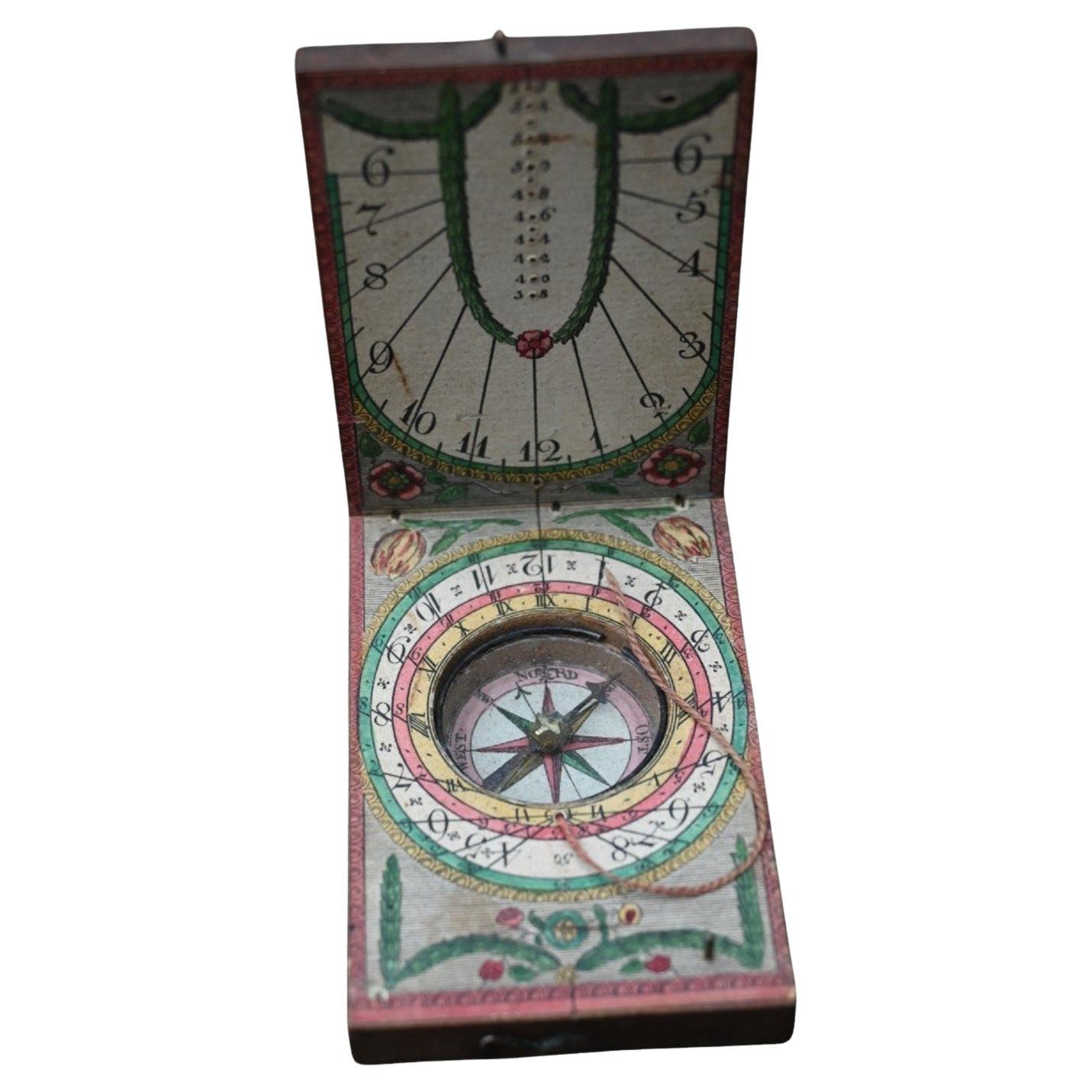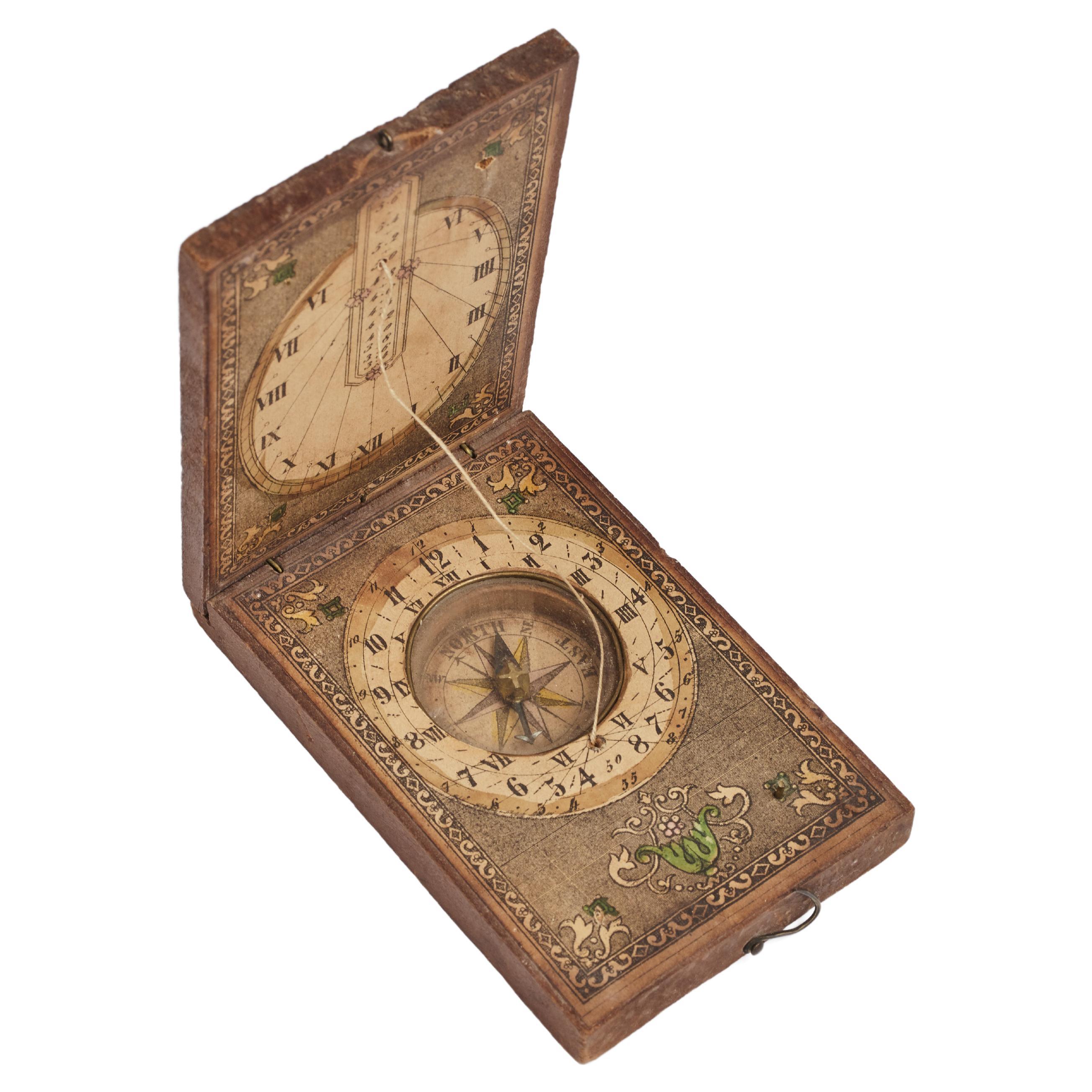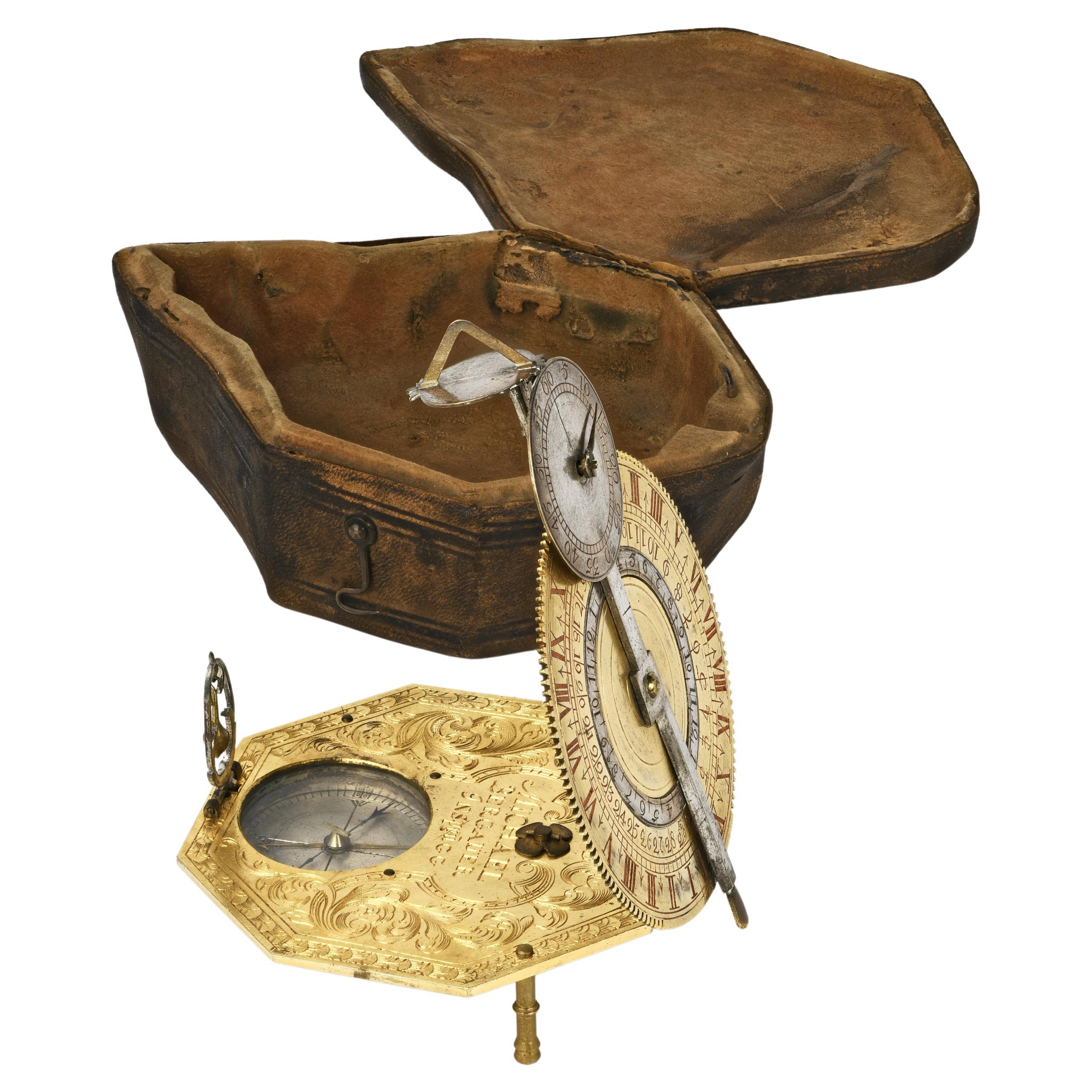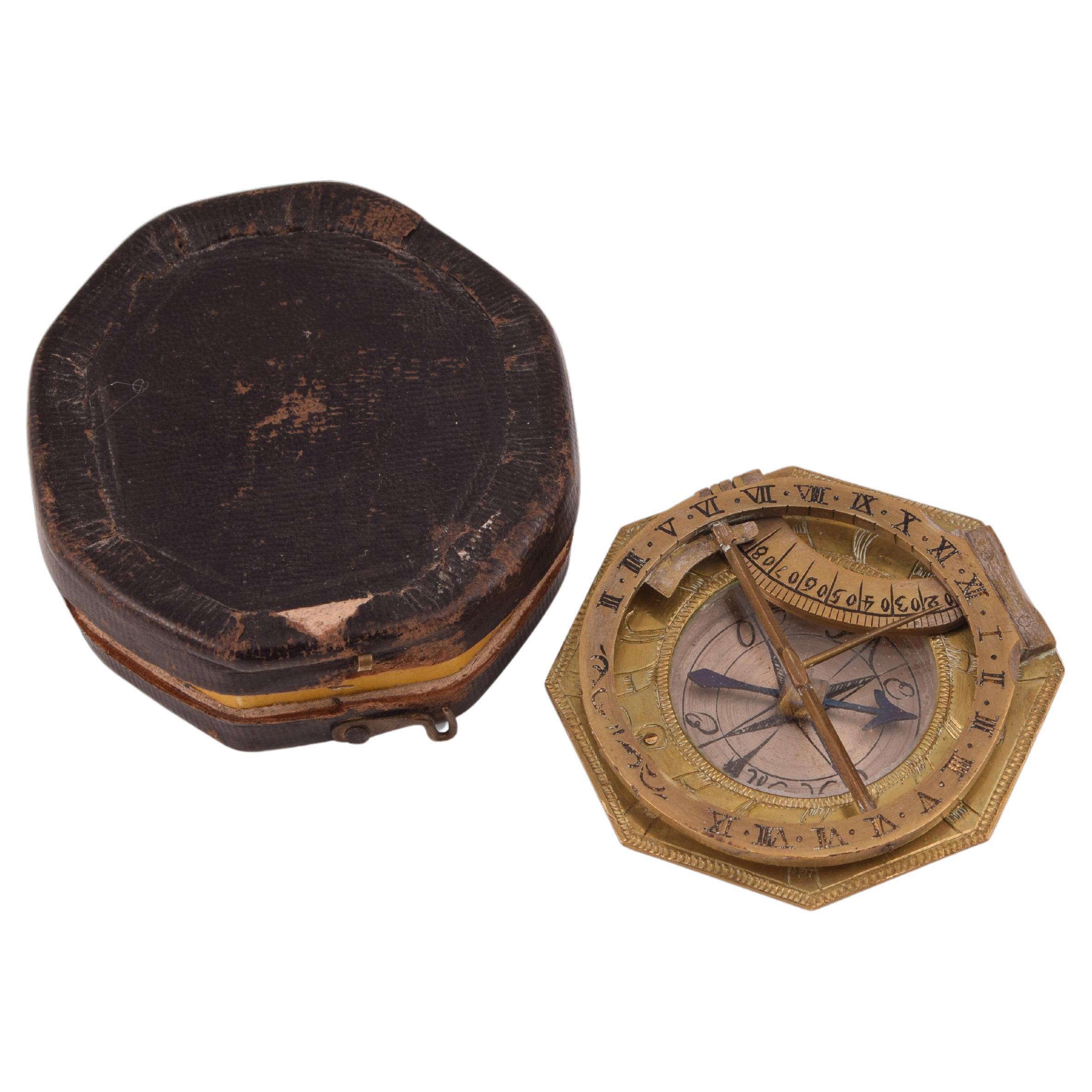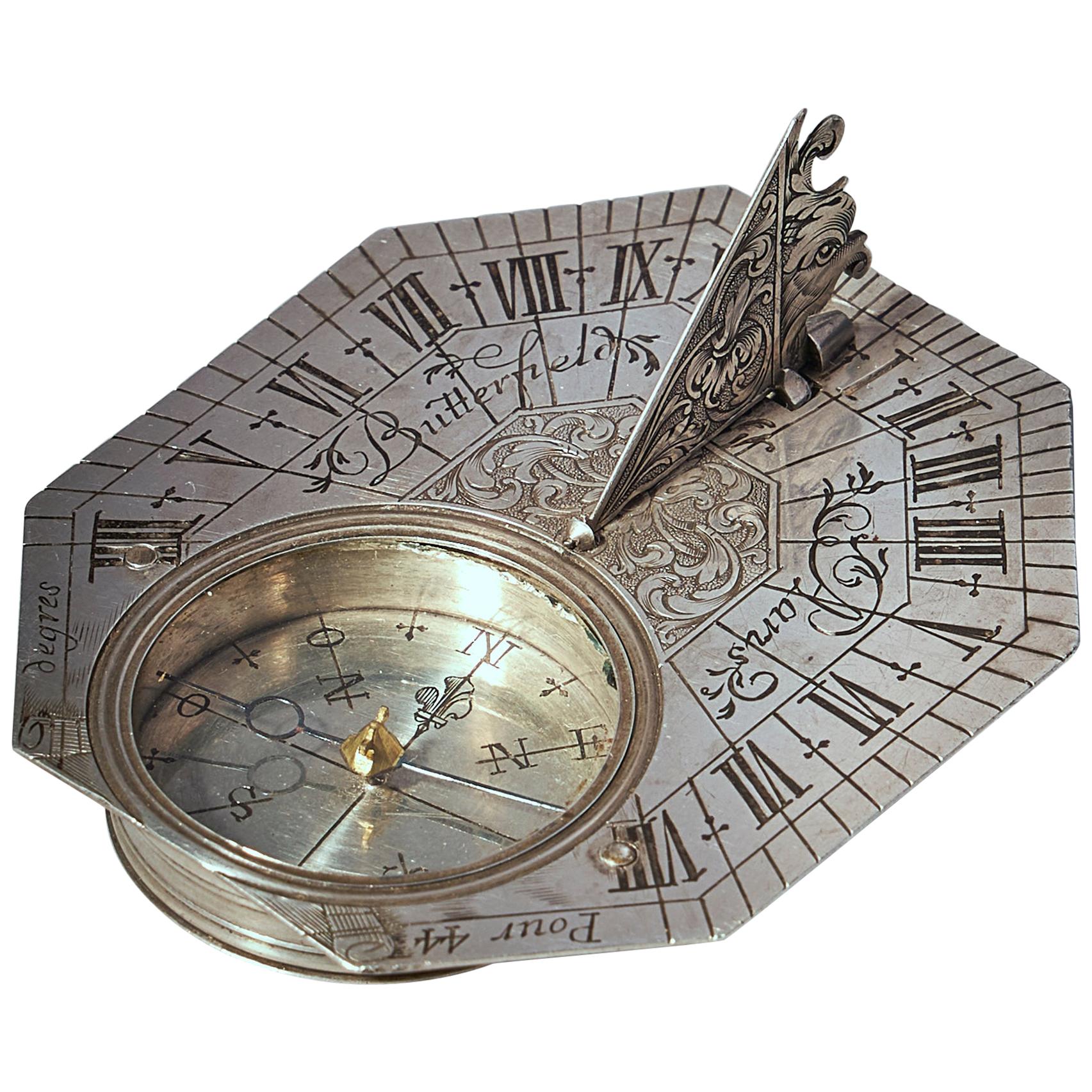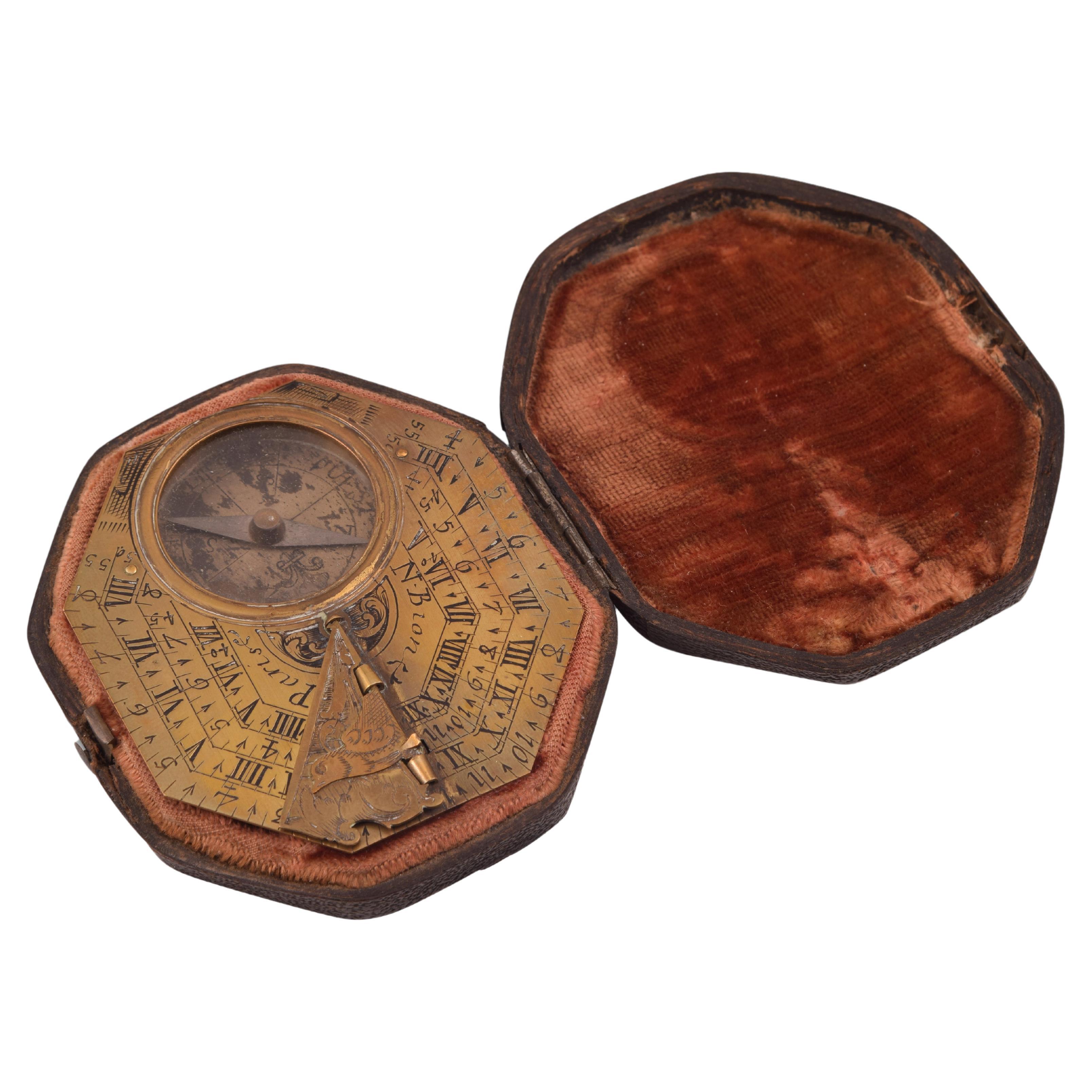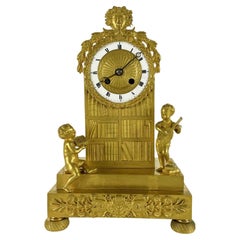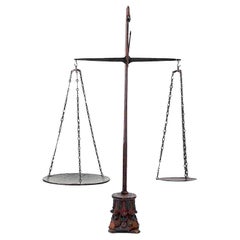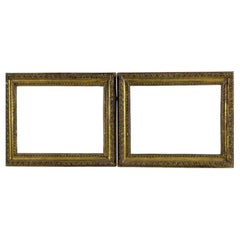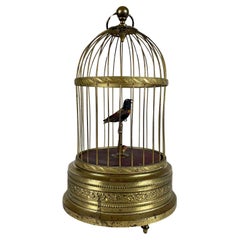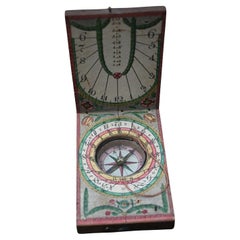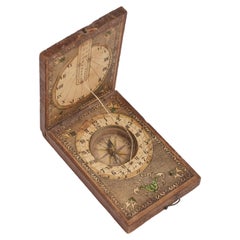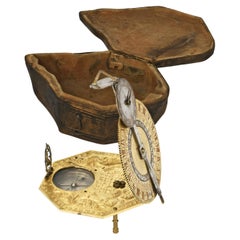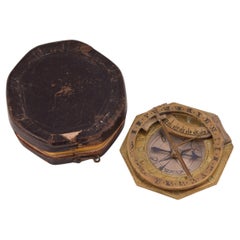Items Similar to 18th Century Diptych Portable Sundial And Compass by German Beringer
Want more images or videos?
Request additional images or videos from the seller
1 of 11
18th Century Diptych Portable Sundial And Compass by German Beringer
$1,304.16
£976.02
€1,100
CA$1,799.20
A$2,000.78
CHF 1,050.85
MX$24,461.55
NOK 13,094.64
SEK 12,344.71
DKK 8,373.75
About the Item
Antique 18th Century Diptych Sundial and Compass a portable wooden boxwood sundial with compass, of German origin, by David Beringer, Nuremberg, dating back to the 1790 circa, in good age related condition, with signs of wear consistent with age and use.
David Beringer (1756 – 1821) was a German scientific instrument maker and craftsman active in Nuremberg and famous for his cubic wooden sundials visible in Metropolitan Museum of Art di New York.
A portable sundial, also known as a travel sundial, is a sundial that cannot be fixed or mounted. Stationary sundials usually measure the hour angle of the sun directly, and must be aligned with the points of the compass. Portable sundials are mostly elevation sundials, with which the elevation angle of the sun is measured and is indicated after evaluation with the as known necessary declination, respectively the year date of the sun as time. As a rule, you also need to know whether it is morning or afternoon, because a certain elevation angle can be measured twice a day.
Size: Height: 1.6 cm
Width: 5,5 cm
Depth: 8.3 cm
Under existing legislation, any artwork in Italy created over 70 years ago requires a governative license for export called Belle Arti. The shipping may require additional 2/3 handling weeks to require and get the license according to the final destination of the artwork.
- Creator:David Beringer (Clockmaker)
- Dimensions:Height: 0.79 in (2 cm)Width: 2.37 in (6 cm)Depth: 3.55 in (9 cm)
- Materials and Techniques:
- Place of Origin:
- Period:
- Date of Manufacture:circa 1790
- Condition:Wear consistent with age and use.
- Seller Location:Milano, IT
- Reference Number:Seller: A9641stDibs: LU2160328487312
About the Seller
5.0
Gold Seller
Premium sellers maintaining a 4.3+ rating and 24-hour response times
Established in 1990
1stDibs seller since 2016
185 sales on 1stDibs
Typical response time: 2 hours
Associations
International Confederation of Art and Antique Dealers' Associations
- ShippingRetrieving quote...Shipping from: Milano, Italy
- Return Policy
Authenticity Guarantee
In the unlikely event there’s an issue with an item’s authenticity, contact us within 1 year for a full refund. DetailsMoney-Back Guarantee
If your item is not as described, is damaged in transit, or does not arrive, contact us within 7 days for a full refund. Details24-Hour Cancellation
You have a 24-hour grace period in which to reconsider your purchase, with no questions asked.Vetted Professional Sellers
Our world-class sellers must adhere to strict standards for service and quality, maintaining the integrity of our listings.Price-Match Guarantee
If you find that a seller listed the same item for a lower price elsewhere, we’ll match it.Trusted Global Delivery
Our best-in-class carrier network provides specialized shipping options worldwide, including custom delivery.More From This Seller
View AllFrench Empire Pendulum In Gilt Bronze Early 1800s With Putti and Bookcase
Located in Milano, MI
French Empire gilt bronze pendulum dating from the early 1800s, charming table clock with allegory of the Arts, arched case, flanked by two putti, one seated with a book and the oth...
Category
Antique Early 19th Century Empire Table Clocks and Desk Clocks
Materials
Bronze
Grande Bilancia Italiana Inizio 1800 in Legno Scolpito e Ferro a Due Piatti
Located in Milano, MI
Alta quasi 51 inches, questa grande bilancia italiana da terra del XIX secolo è realizzata con un capitello corinzio intagliato a motivi folgiati, scolpito con foglie di acanto e la...
Category
Antique Early 19th Century Italian Louis XV Scientific Instruments
Materials
Iron, Metal
$1,896 Sale Price
20% Off
Pair of Italian Carved and Gilded Frames Rome 18th Century
Located in Milano, MI
Pair Roman Gilded Frames 1700, rare pair of antique carved and gilded wooden frames, Rome 18th century. Rectangular in shape, with three orders of carving, this pendant of ancient Ro...
Category
Antique Mid-18th Century Italian Empire Picture Frames
Materials
Giltwood
Automa Tedesco Gabbia Con Uccello Cantante e Animato 1920s Karl Griesbaum
By Karl Griesbaum
Located in Milano, MI
Automa Animato Tedesco Gabbia Con Uccellino del 1920 circa costituito da una gabbia rotonda in ottone dorato con al suo interno un uccello animato canterino su di un trespolo con un ...
Category
Antique Early 19th Century German Art Deco Scientific Instruments
Materials
Brass
Scatola Fiorentina Legno Inciso e Dorato Decorata con Uccellino 1780s Ottagonale
Located in Milano, MI
Originale scatola Italiana in legno laccato ed inciso a bulino di forma ottagonale di epoca Settecentesca, in discreto stato conservativo. Questo tipo di scatole solitamente apparten...
Category
Antique Late 18th Century Italian Neoclassical Decorative Boxes
Materials
Walnut
Goddess Circe Italian Neoclassical Sculpture Early 1800s Carved Ebonized Re-gilded
Located in Milano, MI
Circe Italian Neoclassical Sculpture of Early 1800s the figure is a fascinating depiction of the Goddess Circe, made in Italy in the early 19th century. The pine wood carving and ebo...
Category
Antique Early 19th Century Italian Neoclassical Figurative Sculptures
Materials
Hardwood, Pine
You May Also Like
Antique 18th Century Diptych Portable Sundial And Compass by Beringer
By David Beringer
Located in Bilzen, BE
Antique 18th Century Diptych Sundial and Compass a portable wooden sundial with compass, of German origin, by David Beringer, Nuremberg, dating back to the 1780 circa, in good age re...
Category
Antique Late 18th Century German Louis XVI Scientific Instruments
Materials
Metal
: Wooden pocket diptych sundial Ernst Christoph Stocket. Germany 1780 - 1811.
Located in Milan, IT
Wooden pocket diptych sundial Ernst Christoph Stocket - type, Bavaria. A folding wooden sundial is partially covered in paper with engraved/printed decorations and text. A compass is...
Category
Antique Late 18th Century German Scientific Instruments
Materials
Wood, Paper
Mechanical Equatorial Sundial, Johann Michael Bergauer, Ante 1745
By Johann Michael Bergauer
Located in Milano, IT
Johann Michael Bergauer (Simonsfeld, 1676 - Innsbruck, 1745 circa)
Mechanical equatorial sundial
Signed: Michael Bergauer Insprugg? Innsbruck?
Ante 1745
Gilded and silvered brass; glass.
Measures: closed 1.29 x 3.50 x 4.92 in (33 x 89 x 125 mm); open 5.19 x 3.50 x 3.81 in (132 x 89 x 97 mm).
Weight: the sundial 0.49 lb (224 g); the case 0, 20 lb (95 g)
Original wooden case covered in brown leather.
State of conservation: very good. It has some signs of use. The spring that allowed for the two parts of the instrument to remain open is missing (absent even in the comparative specimens kept in museums).
The sundial is composed of two overlapping plates hinged together on the north edge.
The base plate is octagonal and is supported by three turned legs. The upper face is gilded and a compass with a magnetic variation index has been inserted. The rest of the surface is occupied by a rich decoration of engraved scrolls, centered around the inscription “Michael Bergauer Insprugg”. A foldable oval support with a plumb-bob is attached with a hinge on the southern edge. On the reverse of the base plate a table of the latitudes of some European cities (expanded with the vertical writing “Meiland 40” on the edge and “Rome” deleted) and of Jerusalem has been engraved. A Cam marked for 0 °-70 ° is applied near the northern edge. This can be adjusted to change the inclination of the upper plate according to the latitude; originally a spring, now lost, made it possible to keep the two plates of the clock open.
The second plate is round, has a toothed edge and measures 3.26 in (83 mm) in diameter: it is slightly smaller than the octagonal base which it rests upon and overlaps when the instrument is closed.
The recto is gilded and there are three concentric graduated circles engraved on it:
- the outermost is the equatorial hour dial, numbered I-XII, I-XII;
- the second-one is that of days 1-30 of the lunar month and has “Aetas lunae” engraved on it;
- the third, silvered, is a subsidiary hour dial, with double numbering 1-12; originally it could have been rotated.
The engravings of the first two circles are enameled in red.
In the center - on the polar axis - there is an alidade, at the end of which is associated the silvered minute dial. This, in turn, is welded, perpendicularly, to a small disc, also silvered, with a triangular gnomon. The plate, alidade and minute dial are connected to each other by toothed mechanisms.
Below is the procedure for measuring the time:
1) Adjust the Cam under the base of the clock, based on the latitude of your location;
2) Place the watch on a flat surface using the plumb-bob and with the side closest to the compass facing south;
3) Keeping the instrument still, manually rotate the alidade until the shadow cast by the triangular gnomon on the small silvered disc falls on the line marked below it;
4) The hour and minutes can therefore be read on the hour and minute dials set on the alidade respectively.
Johann Michael Bergauer, who sometimes only signs his works as Michael Bergauer, was born in Simonsfeld, north of Vienna. His apprenticeship as a watchmaker took place in Landshut and he probably worked as a laborer in Augsburg before becoming a watchmaker at the court of Karl Philipp von der Pfalz in Innsbruck in 1708. In the following years, his repeated attempts to obtain Innsbruck citizenship are documented and, in 1721, he is listed as a resident. In 1724 he was admitted to the guild of watchmakers, with which however he had continuous problems. In 1732 he presented a "masterpiece". This is the last reference to his business; he must have died before or in 1745 because in that year his widow appealed to the City Council.
The mechanical sundial...
Category
Antique 1730s Austrian Baroque Scientific Instruments
Materials
Brass
Sundial and Compass with Case, Schrettegger, Johan, Augsburg, Germany, Ca 1800
Located in Madrid, ES
Sundial and compass with case. Bronze. SCHRETTEGGER, Johan. Augsburg, Germany, around 1800.
Sundial with a polygonal shape made of bronze, engraved with plant elements on the front,...
Category
Antique Late 18th Century German Neoclassical Scientific Instruments
Materials
Bronze, Other
Rare Silver Pocket Sundial and Compass by Michael Butterfield, Paris, circa 1700
By Butterfield Paris
Located in Oxfordshire, United Kingdom
A beautiful, rare solid silver Anglo-French octagonal pocket sundial with compass by Michael Butterfield, circa 1700.
The sundial is made for a latitude of 44° and could be used in places in the south of France such as Avignon and elsewhere along this parallel. The elaborately engraved base plate has a Roman chapter ring on which the gnomon (a triangular flap) casts its shadow. It is signed by the maker in the following manner: Butterfield A Paris. On one side is a glazed recessed compass with a blued steel hand to position the instrument in such a way that the time can be read. The hinged triangular gnomon is richly engraved and in the shape of a bird’s head. The folding gnomon and cut corners enable the dial to be carried in the pocket.
The underside shows the latitudes of various Southern-French places in the relevant areas
Its maker Michael Butterfield was an English instrument maker who based himself in 'Le Quay de l'Horloge' of Paris from circa 1685. These types of dials, often replicated by other makers, became known as Butterfield Dials...
Category
Antique Late 17th Century French Louis XIV Carriage Clocks and Travel Cl...
Materials
Silver
Sundial with Compass and Case, Bronze, Bion, Nicholas, Paris, 18th Century
By Nicholas Bion
Located in Madrid, ES
Sundial with compass and case. Bronze. BION, Nicholas. Paris, 18th century.
Polygonal sundial with a bird-shaped gnomon and engraved triangular piece, which presents, on one side, ...
Category
Antique 18th Century French Neoclassical Scientific Instruments
Materials
Bronze, Other
More Ways To Browse
Antique German 18th Century
Nuremberg Brass
Antique Wooden Compass
Compass Sundial
Antique Compass Sundial
German Sundial
Antique Brass Sundials
Portable Sundial
Antique Brass Sundial Compass
Antique Scale Pan
English Oak Barrel
North Wind Antique Furniture
Wood Thermometers
Mid Century Barometer
Antique Vacuum
Weather Station
Mahogany Barometer
Antique Optical Instruments
